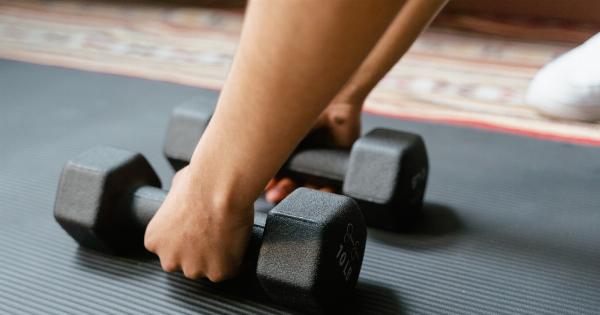Aerobic exercise is a type of physical activity that gets your heart pumping. It is often referred to as “cardio” exercise, as it helps strengthen the heart and lungs.
In addition to this, aerobic exercise is also an effective way to shed those extra pounds. This article will delve into the benefits of aerobic exercise, how it can help strengthen your heart, and how it can aid in weight loss.
The Benefits of Aerobic Exercise
Aerobic exercise comes with a wide range of benefits. Apart from promoting heart health and aiding in weight loss, it can also improve your mental health, boost your mood, increase stamina, and reduce the risk of various chronic diseases.
How Aerobic Exercise Strengthens Your Heart
Aerobic exercise is crucial for maintaining the health of your heart. When you engage in aerobic activities, your heart rate increases, leading to increased blood flow and oxygen delivery to your muscles.
Over time, this helps to strengthen your heart muscles and improve its efficiency in pumping blood throughout your body.
Types of Aerobic Exercise
There are various types of aerobic exercises to choose from. Some popular options include walking, running, swimming, cycling, dancing, jumping rope, and kickboxing.
The key is to find an activity that you enjoy, as this will increase your adherence and make it more likely for you to stick with it in the long run.
Aerobic Exercise and Weight Loss
If shedding those extra pounds is your goal, then incorporating aerobic exercise into your routine is essential. Aerobic exercise helps burn calories, which is crucial for weight loss.
The more intense the activity and the longer the duration, the more calories you will burn. It is recommended to engage in moderate-intensity aerobic activities for at least 150 minutes per week, or high-intensity activities for at least 75 minutes per week, to achieve weight loss.
The Role of Intensity in Aerobic Exercise
The intensity of your aerobic exercise plays a significant role in determining its effectiveness. Moderate-intensity exercises, such as brisk walking or swimming, are generally safe for most people and offer numerous health benefits.
On the other hand, high-intensity exercises, like running or HIIT (high-intensity interval training), can provide a quicker calorie burn and may be more suitable for those looking to maximize weight loss.
Tips for Getting Started
If you are new to aerobic exercise or have been inactive for a while, it is essential to start gradually to prevent injuries and allow your body to adapt. Here are some tips for getting started:.
- Consult with your healthcare provider before beginning any new exercise program, especially if you have any underlying health conditions.
- Choose an activity that you enjoy, as it will make it easier to stick with it.
- Start with short sessions of 10-15 minutes and gradually increase the duration as your fitness level improves.
- Invest in proper footwear and attire to ensure comfort and prevent injuries.
- Stay hydrated and listen to your body. If you feel any pain or discomfort, take a break.
- Consider joining a group or finding a workout buddy for added motivation.
Combining Aerobic Exercise with Strength Training
For optimal health and weight management, it is beneficial to combine aerobic exercise with strength training. While aerobic exercises primarily focus on cardiovascular fitness and calorie burning, strength training helps build lean muscle mass.
Having more muscle helps increase your metabolism and burn more calories at rest, contributing to weight loss.
Tracking Your Progress
Tracking your progress is crucial to stay motivated and monitor your improvements. Consider using a fitness tracker or smartphone app to keep a record of your workouts, including duration, distance, and calories burned.
Additionally, take note of how you feel both physically and mentally after each session to celebrate your achievements.
Staying Safe during Aerobic Exercise
While aerobic exercise offers numerous benefits, it is essential to prioritize safety. Here are some tips to stay safe during your workouts:.
- Warm up before each session with some dynamic stretching or light cardio to prepare your muscles.
- Pay attention to your form and technique to avoid unnecessary strain or injuries.
- Allow your body time to recover and avoid overtraining. Rest days are crucial for muscle repair and growth.
- Listen to your body and adjust the intensity or duration of your workouts as needed.
- If exercising outdoors, wear sunscreen and protective clothing to prevent sunburn and heat-related illnesses.
The Importance of Consistency
To reap the benefits of aerobic exercise, consistency is key. Aim to make it a habit and incorporate it into your daily routine.
Consistency will not only help you achieve your desired weight loss goals but also promote long-term cardiovascular health and overall well-being.
Conclusion
Aerobic exercise is a fantastic way to strengthen your heart and shed those extra pounds. By engaging in regular aerobic activities, you can improve your cardiovascular health, boost your mood, increase stamina, and achieve weight loss.
Remember to start gradually, choose activities you enjoy, and combine aerobic exercise with strength training for optimal results. Stay safe, track your progress, and most importantly, stay consistent. Begin your aerobic exercise journey today and experience the transformative benefits firsthand!.




























